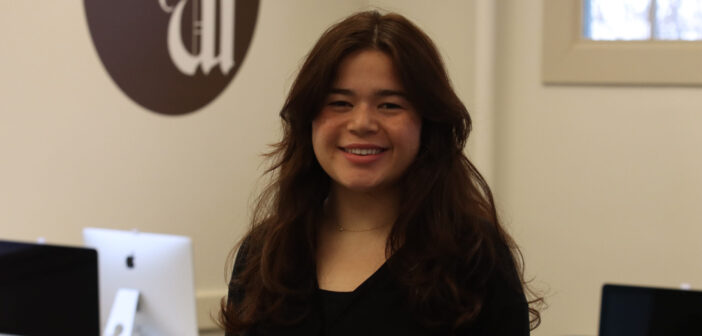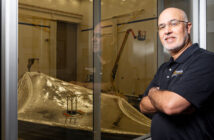It’s March 6, 2023, and I’m sitting in a hospital bed. The room is a little too room-temperature, almost lukewarm. My pajama pants are too hot, but I’m too tired to do anything about it.
A nurse named Cindy walks over to the side of my bed in the Lehigh Valley Hospital emergency room and pushes two clear vials of a gastrointestinal “cocktail” into my IV.
She hands me two small brown cups. “Take these like a shot,” she says. “They taste awful.”
Cindy is no more than 35 years old, wearing navy blue scrubs and black patent leather clogs, but her eyes are tired — the product of years of 7 p.m. to 7 a.m. shifts in the emergency room. Cindy is just one of dozens of healthcare workers I’ve met since coming to Lehigh two years ago.
I was rarely sick in high school, but after I tested positive for COVID-19 two weeks into my first year at Lehigh, my health took a turn for the worse.
It started with dragging my belongings up to Lehigh’s isolation housing in House 95 and listening to Fetty Wap perform his concert on the Front Lawn from a distance. I spent 10 days in isolation, only mildly sick but continually testing positive.
Once I returned to my dorm, Dravo Hall, determined to never eat another meal in my room, my health only seemed to get worse. Sinus infection after sinus infection and chronic bronchitis coupled with the physical stress of walking onto Lehigh’s rowing team made me a COVID long-hauler with asthma by November.
Being from San Francisco, California, a family friend suggested I get a primary care physician in Pennsylvania. I ultimately found Laura, a physician’s assistant at St. Luke’s Coopersburg Center Valley Family Practice.
Laura concluded I had Long COVID, which the Centers for Disease Control and Prevention defines as “signs, symptoms, and conditions that continue or develop after initial COVID-19.” She sent me to St. Luke’s for a full COVID workup.
One lung capacity test in a spaceship-looking chamber, five chest X-rays and countless blood panels later, I found out I am a weaker, asthmatic and slightly anemic version of my pre-Lehigh self.
Everyone says all college students are sick, especially first-years. The “frat flu” or “freshman flu” makes its rounds, infecting its victims at a vicious pace. Still, after my most recent trip to the emergency room, I had the realization that I might just be a sickly person, at least for right now.
The summer after my first year, I contracted another round of COVID that brought on almost every stomach issue under the sun. I spent most of my break drinking fiber, cutting out gluten and dairy or lying on my stomach for relief.
As Laura and I navigated my illness, it became clear my new illness combat procedure is consistently only one thing: expensive — even with insurance. The simple process of determining what your illnesses are, even before settling on a treatment plan, can be financially crippling in and of itself.
According to the 2020 census, 8.6% of Americans were uninsured that year. This means 28 million people had limited or no access to health care. When you take into account medical debt and insurance plans with poor coverage, that number skyrockets.
I am fortunate enough to not only have access to health insurance but long-term care. For the uninsured, prolonged treatment for chronic illness is not only harder to access but exponentially more expensive.
It is hard to be sick in college, but it can be financially devastating to be sick in life.
In the American health system, one accident or new illness can potentially lead to homelessness.
According to an American Journal of Public Health study, over 58% of respondents “very much” or “somewhat” agreed medical expenses contributed to their declaring bankruptcy.
As we move away from the height of the pandemic, there is a notable difference in our conversations about healthcare. We are more aware of the value and strength of our healthcare workers, but there is also an exemplification of how inaccessible America’s best facilities are to most of the country.
Our eyes are barely open to the full reality.
Growing up, I was aware of the exclusivity of American healthcare, but it took me being sick to recognize the horrible reality of our system.
Laura and millions of other doctors, nurses and physician’s assistants work through the night to provide the best care possible. However, without increased accessibility to their services, simple illnesses can become life-altering in a completely preventable way.
We have some of the best doctors and healthcare providers in the world — for only a small percentage of Americans.The rest are left without adequate care every year, not because it doesn’t exist, but because it is too expensive.






Comment policy
Comments posted to The Brown and White website are reviewed by a moderator before being approved. Incendiary speech or harassing language, including comments targeted at individuals, may be deemed unacceptable and not published. Spam and other soliciting will also be declined.
The Brown and White also reserves the right to not publish entirely anonymous comments.